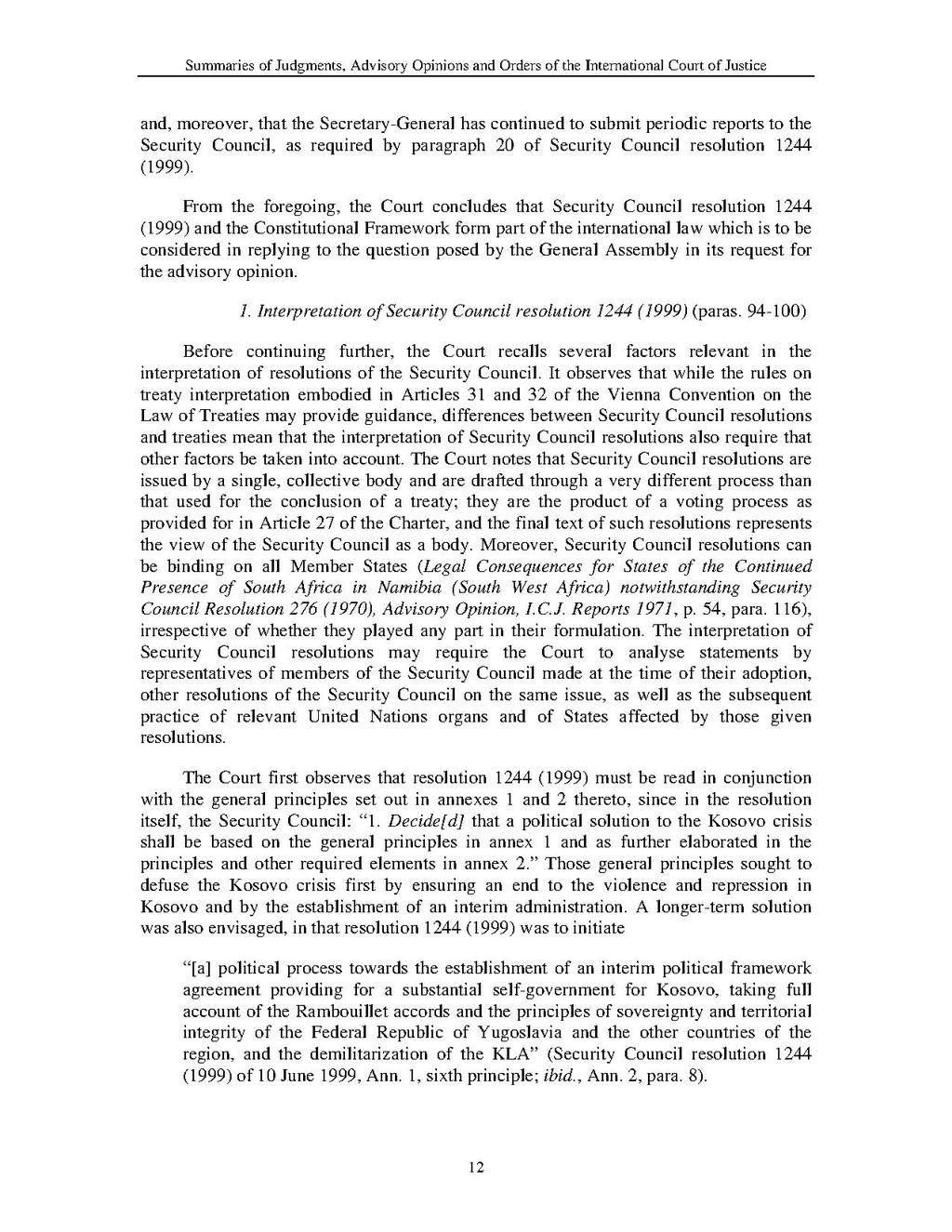Summaries of Judgments, Advisory Opinions and Orders of the International Court of Justice
and, moreover, that the Secretary-General has continued to submit periodic reports to the Security Council, as required by paragraph 20 of Security Council resolution 1244 (1999).
From the foregoing, the Court concludes that Security Council resolution 1244 (1999) and the Constitutional Framework form part of the international law which is to be considered in replying to the question posed by the General Assembly in its request for the advisory opinion.
Before continuing further, the Court recalls several factors relevant in the interpretation of resolutions of the Security Council. It observes that while the rules on treaty interpretation embodied in Articles 31 and 32 of the Vienna Convention on the Law of Treaties may provide guidance, differences between Security Council resolutions and treaties mean that the interpretation of Security Council resolutions also require that other factors be taken into account. The Court notes that Security Council resolutions are issued by a single, collective body and are drafted through a very different process than that used for the conclusion of a treaty; they are the product of a voting process as provided for in Article 27 of the Charter, and the final text of such resolutions represents the view of the Security Council as a body. Moreover, Security Council resolutions can be binding on all Member States (Legal Consequences for States of the Continued Presence of South Africa in Namibia (South West Africa) notwithstanding Security Council Resolution 276 (1970), Advisory Opinion, I.C.J. Reports 1971, p. 54, para. 116), irrespective of whether they played any part in their formulation. The interpretation of Security Council resolutions may require the Court to analyse statements by representatives of members of the Security Council made at the time of their adoption, other resolutions of the Security Council on the same issue, as well as the subsequent practice of relevant United Nations organs and of States affected by those given resolutions.
The Court first observes that resolution 1244 (1999) must be read in conjunction with the general principles set out in annexes 1 and 2 thereto, since in the resolution itself, the Security Council: "1. Decide[d] that a political solution to the Kosovo crisis shall be based on the general principles in annex 1 and as further elaborated in the principles and other required elements in annex 2." Those general principles sought to defuse the Kosovo crisis first by ensuring an end to the violence and repression in Kosovo and by the establishment of an interim administration. A longer-term solution was also envisaged, in that resolution 1244 (1999) was to initiate
"[a] political process towards the establishment of an interim political framework agreement providing for a substantial self-government for Kosovo, taking full account of the Rambouillet accords and the principles of sovereignty and territorial integrity of the Federal Republic of Yugoslavia and the other countries of the region, and the demilitarization of the KLA" (Security Council resolution 1244 (1999) of 10 June 1999, Ann. 1, sixth principle; ibid., Ann. 2, para. 8).
12
